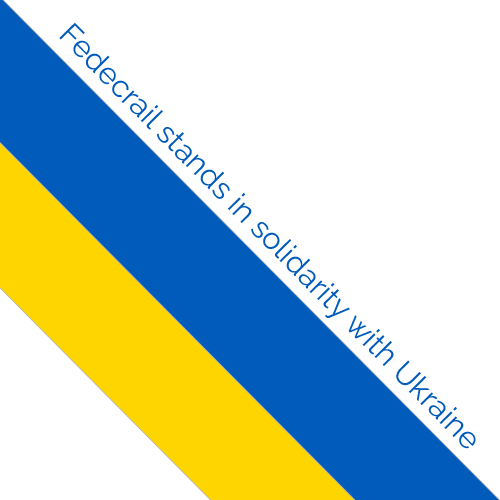Fedecrail Environmental Policy paper, part of the Fedecrail Strategic Plan 2017 – 2022.
1. (Mobile) Heritage in a changing world.
Generally spoken we can conclude that the social feeling about the environment in relation to the
future of our planet has changed a lot in the last quarter of the century. In the end of 2015 this
change became clear in the Paris climate conference, where a new international climate agreement
as this change was presented. In the meantime many countries signed this contract in which strong
arrangements are agreed about bringing back the CO 2 output in the world to slow down the global
warming. (See the attachment for a summary of information about the results of the Paris Climate
Conference)
2. Smoke, smell and sounds.
Carbon dioxide (CO 2 ) is the result of combustion of more or less all the traditional fuels like wood,
oil, gas and coal. Most of the Fedecrail members and their adherents, are using oil and coal as the
traditional fuel. Some 40 years ago a locomotive driver was praised when he and his engine made
nice plumes of smoke when seeing photographers along his railway. Nowadays people are
complaining about smoke, about dirt and the smell and yes about the danger of using coal
(particulates). An old diesel-locomotive that makes much noise and is producing a lot of smoke and
diesel-smell is not longer really appreciated. In some cities the local authorities are organising
environmental zones, in which old busses, old cars, old motorcycles etc. are not allowed nowadays
to take part in the day to day traffic, or even stronger are not tolerated at all any longer.
3. Retaining conceptual authenticity of mobile heritage as cultural and educational value.
These traditional fuel is the base of the conceptual authenticity of the preserved railway objects like
steam- and diesel-locomotives, and the operational processes who were so characteristic for there
being. This preserving process inclusive COAL, should make it clear that we see it as our right to
burn the traditional fuels like coal and oil. Fedecrail first objectives in this case should be, to put
together an overall plan, to create a base for a long term mutual interest between the people of the
heritage railway world and the politicians who are involved in creating a better environmental
climate to give generations after us the chance to live a good live on earth. In this plan the cultural
and educational values should be retained to tell the exceptional story, that makes mobile heritage
in general and particular preserved railways in their authentic form into a sincere, instructive and
attractive product. In that form it will educate a great amount of people all over the world, varying
from youngsters to elderly people, about our world during the period of the traditional
industrialization and what it has brought mankind and why it has to be transformed in our modern,
green and energy neutral world.
4. Elements to be developed for the an overall plan to create a mutual interest.
“`
A. Fedecrail has to formulate clear goals, together with her Members and their adherents.
B. Where possible Fedecrail should form a united front with other organisations active in the
mobile and industrial heritage.
C. Fedecrail should gather as much as possible relevant data, about the different fields in
which the world of heritage railways is active:
“`
– Social economic
– Cultural
– Technical
– FEDECRAIL should marshal and publicise the arguments supporting the use by its
members and their adherents of traditional fuels such as coal and oil and, in
particular, explaining the context of such use being a minimal contributor to
noxious emissions.
– The use of fuel
– To find ways of reduction of output of CO 2 , fine particles and other noxious
emissions, inclusive the retaining of the conceptual authenticity of the involved
objects and connected operational processes. This can be part of the educational
product.
– Convince political partners of the fact that the output made in our sector is minimal
so that our sector only contributes to a minimal proportion of global output.
– Looking into alternative ways of reducing emissions
– Networking
– Politically
– Touristic
– Educational
– Human Resource Management
– Other participants in the mobile heritage world
– Other participants in the industrial heritage world
– Communication & tools
– Internal
– Corporate
– Public Affairs
– International
– Media
5. Some examples to find an integrated route, for heritage railways as a part of mobile
heritage in general to the 22nd century.
A. Cultural value of rail related heritage as instrument for long term preservation as working
objects.
In some countries like France, Germany, the United Kingdom and the Netherlands, the
cultural value of mobile heritage is recognized as so important, and especially the
conceptual authenticity, that they are protected by law, like the listed buildings.
It would be a Fedecrail task to realise a understandable system like this on a European scale.
Instruments:
a. The RIGA Charter
b. Forming of a connection between other forms of mobile heritage, like historic ships,
road-vehicles and airplanes (a European Mobile Collection).
c. Looking for joint effort in cultural fields that are longer accepted in the world of
cultural heritage, like the immovable heritage (buildings), or art (paintings etc.) in
the Museums.
d. Learning from the Museums united in the ICOM (International Conference of
Museums), mobile heritage organisations should reform into permanent institutions
in the service of society and its development, open to the public, which acquires,
conserves, researches, communicates and exhibits the mobile heritage and its
environment for the purposes of education, study and enjoyment. Many Museums
are a highly successful tourist attraction nowadays and could be a useful pattern for
mobile heritage organizations.
B. Fedecrail should choose their partners in this process very carefully.
It is important to realise in this case, that, while the sector’s output of CO 2 , fine particles and
other noxious emissions is in global perspective miniscule, the size of the problems to be
solved are huge, because:
– the results of the Paris climate conference are transcending the European borders.
– The main platform to discuss the climate question at hand is the United Nation UNFCCC
platform (United Framework Convention on Climate Change).
– On the other hand the EU has decided to be a leading partner in this long term process.
“`
It is important to seek structural collaboration in a most effective way between Fedecrail
and (par example):
“`
– Our Members and
– Their members (adherents)
– EU politicians (in the fields of Culture, Tourism, transport and environment)
– Europa Nostra
– The Wattrain organisation
– The other regional umbrella organisation for Asia, Africa, Australia, America
– The private sector in environment, transport and Culture
– Etc, etc…..
As long as there are common interests that will give real chances for realistic results.
C. Try to find ways to produce a real reduction of output, but retain the conceptual
authenticity.
Instruments:
a. Techniques developed by Waller. (For the more touristic orientated organisations);
– electrical pre-heating system
– better isolation of boiler (savings in rest warmth)
– Using different fuel
b. Make better and process-controlled boiler-water. Softening and desalting will
economise between 15-25% on coal/fuel use, minimalize the need for boiler-washouts
and increase boiler lifetime;
c. Try to catch the rest warmth of the hours heating the boiler after lighting up until start
to run the engine, and use that rest warmth without the CO 2 for heating the buildings
and the facilities the railway is using for their own operations. If keeping the locomotive
in steam inclusive a fire on, during the non-use moments, you could do same.
d. [http://www.csrail.org](http://www.csrail.org) (USA) , White paper programme.
* Use of Lempor exhausts
* Firing with Torrefied Biomass
e. Looking for the best type of coal, with as results less smoke and less complaints. Mostly
less residual waste (reduction of operational costs)
f. Better training of staff, in theory and practically and make a good day to day operational
experience to a qualitative professional level.
D. The image of Fedecrail as important partner in this complex but foremost important
process.
– Fedecrail should aim on a qualitative professional image in the fields we are active;
– Fedecrail should be as transparent as possible to their members and their adherents in
the development of the strategy that can be realistic in the goals to achieve.
– After the decision is made for the strategic goals in this process, every organisation in
between Fedecrail should be informed and “sing the same song” as much as possible.
– The Members and their adherents are also the “eyes and ears” of the heritage railway
world. During the process there should be a simple network developed via which
unknown or unexpected reactions/news should be sent to the negotiators and vice
versa.
“`
The Policy Document “Plan Paris” has been developed (as other future Policy Documents will
be as well) to achieve the strategic objectives, formulated in the strategic plan 2017 – 2022, to
the maximum and agreed by the Fedecrail AGM at May 5th 2017.
“`
6. Financing.
To complete this “Plan Paris”, there should be added a chapter about financing (chapter 6), which
will be incorporated within the yearly budgets of the organisation. In the budget it should clear who
is responsible finding the funds and for spending the budgeted money to the right amount and
moment.
7. Timetable
Also there should be added a chapter about the timetable for running this project. It also indicates
the moments of which should be clear, that the necessary financial resources should be available.
If these financial resources are not (or not completely) available, the council has to decide to go on
or not, or with what alteration the project will be continued.3. Retaining conceptual authenticity of mobile heritage as cultural and educational value.
These traditional fuel is the base of the conceptual authenticity of the preserved railway objects like
steam- and diesel-locomotives, and the operational processes who were so characteristic for there
being. This preserving process inclusive COAL, should make it clear that we see it as our right to
burn the traditional fuels like coal and oil. Fedecrail first objectives in this case should be, to put
together an overall plan, to create a base for a long term mutual interest between the people of the
heritage railway world and the politicians who are involved in creating a better environmental
climate to give generations after us the chance to live a good live on earth. In this plan the cultural
and educational values should be retained to tell the exceptional story, that makes mobile heritage
in general and particular preserved railways in their authentic form into a sincere, instructive and
attractive product. In that form it will educate a great amount of people all over the world, varying
from youngsters to elderly people, about our world during the period of the traditional
industrialization and what it has brought mankind and why it has to be transformed in our modern,
green and energy neutral world.


